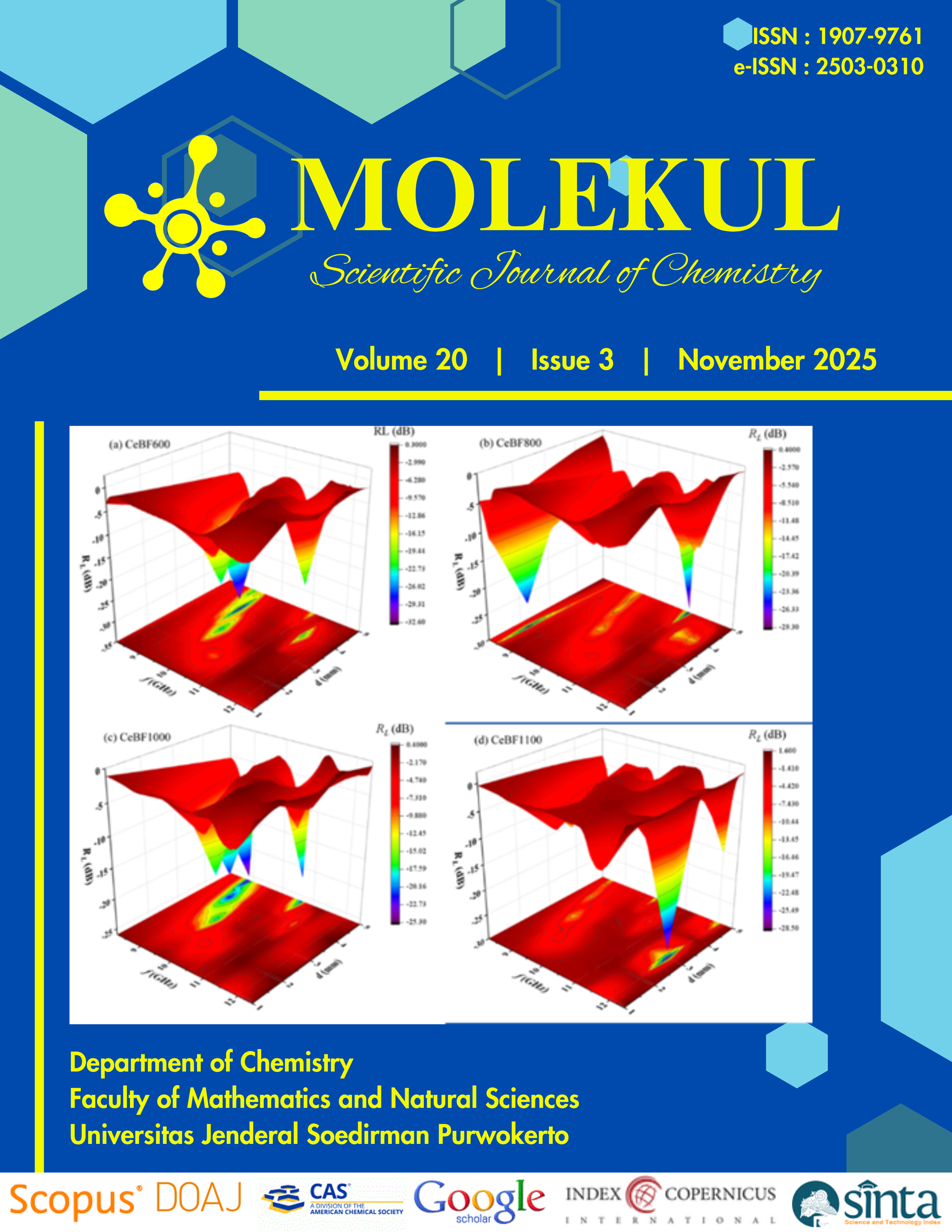Optimization of Silver Doping on Natural Dye Mixed Chlorophyll-Anthocyanin on The Efficiency of Dye Sensitized Solar Cells (DSSC)
Abstract
ABSTRACT. This study aimed to incorporate silver (Ag) in the mixture of chlorophyll-anthocyanin dyes to improve DSSC efficiency. This research evaluated the impacts of various natural dye modifications with different concentrations of Ag incorporation on the DSSC performance. Here, anthocyanin (A) was extracted from butterfly pea flowers, while chlorophyll (C) was extracted from spinach leaves. The two dyes were mixed with a volume ratio of (anthocyanin: chlorophyll) 1:3. From the ratio of anthocyanin: chlorophyll, the extraction of anthocyanin solution is 25% and chlorophyll is 75%. Ag was incorporated into the dye mixture (AC) with distinct concentrations of 0%, 3%, and 5%. The dyes were characterized using a UV-Vis spectrophotometer and Keithley I-V meter to investigate their optical and conductivity properties. The DSSC performance was assessed with a Keithley I-V meter. The yields exhibited that the Ag incorporation improved the absorbances and widened the absorption area of the AC dyes as compared to the single and mixed dyes without Ag addition. Further, the results demonstrated that Ag incorporation enhanced the conductivity of the AC dyes, showing that the values were 4.43×10⁻² (Ωm)⁻¹, 6.46×10⁻² (Ωm)⁻¹, and 8,21×10⁻² (Ωm)⁻¹ for 0%, 3%, and 5% Ag incorporation. Moreover, the conversion efficiency values obtained by DSSCs prepared with AC dyes, Ag-incorporated AC 3%, and Ag-incorporated AC 5% were 0.073%, 0.209%, and 0.111%, respectively that Ag incorporation could significantly advance the DSSC performance. This study found that the AC dyes incorporated with 3% Ag were he optimal composition to produce the optimal DSSC performance.
Keywords: anthocyanin, chlorophyll, DSSC, dye, silver
Authors agree with the statements below:
- Authors automatically transfer the copyright to the MOLEKUL journal and grant the journal right of first publication with the work simultaneously licensed under a Creative Commons Attribution 4.0 International License (CC BY 4.0).
- Authors are able to enter into separate permission for the non-exclusive distribution of the journal's published version of the work (e.g., post it to an institutional repository or publish it in a book), with an acknowledgment of its initial publication in this journal.













